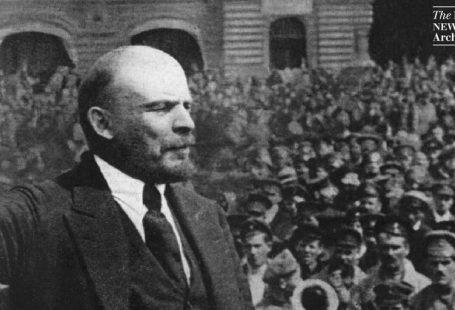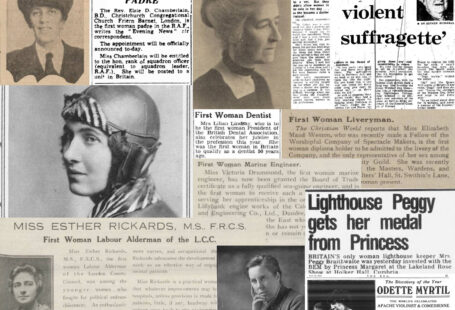Imbued with Christian symbolism and yet born out of pagan tradition, the Christmas tree is an integral part of Christmas celebrations across the world. With between six and eight million real Christmas trees now sold in the United Kingdom alone, it is hard to think of a time when it was a new and exotic Continental import.
In this special blog, using articles from the British Newspaper Archive, we will take a look at the history of the Christmas tree, from its importation by Prince Albert in the 1840s, to how it was embraced throughout the Victorian era, from its decline in popularity during the First World War due to its Germanic connotations, to how it finally became a symbol of post-war resurgence thanks to a special gift from Norway.
Want to learn more? Register now and explore The Archive
IIlustrated London News | 26 December 1970
Bringing Home the Christmas Tree
In December 1845 the London Mission Society held a ‘pleasing celebration of the season’ in Cripplegate for 400 children. Central to the celebrations, according to the Illustrated London News, was ‘the exhibition of a German Christmas Tree, or Tree of Love.’
It is interesting to note how the Illustrated London News has to explain to its readers what a Christmas tree is:
In almost every family, is set up with this pleasing figure, having the resemblance of a growing tree, loaded with a profusion of fruits and flowers; and, upon its branches, the different members of the family suspend the little presents which they intend for those they love best; and on the exhibition of the Tree, the presents are claimed by the donors, and handed, with compliments, to their friends.
The Christmas tree at Cripplegate | Illustrated London News
The Christmas tree exhibition at the Cripplegate Temperance Hall was a great success, the children of the Mission hanging ‘a load of oranges and other fruit on their Christmas tree.’ By 1847, two years later, the Illustrated London News is advising its readers on ‘How to Make a Christmas Tree:’
The Christmas-tree is the top of a young pine, fixed in a large flower-pot, or tub, filled with mould, which, with the pot or tub, is hidden by moss, so as to represent a small enclosed garden. It is placed in a room: the branches of the fir are trimmed a little up to the very top, and loaded with small wax tapers, put into little tin sockets made for the purpose; so that, when these are all lighted, the tree appears in one perfect blaze.
The above is taken from a ‘very useful and entertaining volume entitled ‘The German Christmas Eve.’’ And it was of course from Germany that the tradition of the Christmas tree was introduced.
Prince Albert started the royal tradition of the Christmas tree, beginning in 1840, which in turn was to take hold with the general population. The Manchester Courier and Lancashire General Advertiser describes the Christmas tree at Windsor Castle in 1848, and how it is ‘annually prepared, by her majesty’s command, for the royal children.’
The royal tree sounds especially sumptuous:
Pendent from the branches are elegant trays, baskets, bonbonniers, and other receptacles for sweetmeats of the most varied kind, and of all forms, colours, and degrees of beauty. Fancy cakes, gilt gingerbread, and eggs filled with sweetmeats, are also suspended by variously coloured ribands from the branches.
And soon, the Christmas tree had taken the country by storm, and far from being the sole preserve of royalty, it was embraced by ordinary people. Our newspapers abound with illustrations in the 1880s and 1890s of the Christmas tree being brought home, evidence of how it had captured the public imagination.
Bringing Home The Christmas Tree by Lucien Davis | Penny Illustrated Paper | 19 December 1891
Christian Meets Pagan
But where did the Christmas tree tradition spring from, before Prince Albert brought it across from his homeland?
There is of course a strong association with Christianity, as The Graphic explains in 1920: ‘The early Christians associated the holly or the holy tree with a magnificent and Messianic passage in Isiah: ‘The glory of Lebanon shall come unto thee; the fir-tree, the pine-tree and the box together to beautify the place of my sanctuary.’’
The Graphic | 25 December 1920
Indeed, in an article in the Crawley News, reformer Martin Luther is ‘credited with the first decorated Christmas tree.’ The story goes that he ‘was so impressed by the beauty of the night sky one Christmas Eve that he returned home and tried to reproduce the effect by taking a small tree into his house and loading it with candles.’
What we do know, however, is that citizens of Strasbourg in 1605 had trees set up in their parlours, decorated with ‘coloured paper, garlands of gold foil, wafers, apples and brightly wrapped sweets.’ And far from the Christmas tree being Christian in origin, it is likely that the tradition echoes ancient pagan practices.
According to the Crawley News, ‘in Germany, fir trees held great prominence before Christianity took hold.’ Some tribes would cut fir trees down and burn them as human-sacrifice substitutes for their gods.
And there is some evidence to suggest that in England the tradition of the Christmas tree already existed in a slightly different form. The Illustrated London News in 1846 describes the practices of the Gloucestershire village of Alveston, where a ‘Christmas Tree is regularly carried from house to house…but the emblems of the Trinity are substituted for presents.’
The Vanishing Christmas Tree
And if the Victorian era was the heyday of the Christmas tree, the early twentieth century would see a decline in its popularity.
One might think that its decline might be associated with the dangers posed by the Victorian Christmas tree. Pre electric fairy lights, tapers were lit on the trees’ branches, so that the ‘tree appears in one perfect blaze.’ This led to some rather tragic accidents, as one might expect. In Birmingham, 1896, a seven-year-old boy was burned to death after his mother had prepared a Christmas tree for him.
Illustrated Police News | 4 January 1896
But its decline was not routed in its risks. Indeed, a 1909 article in The Bystander called the ‘Vanishing Christmas Tree’ lays the blame squarely on growing materialism:
Like most of the earlier Victorian fashions, nearly all of which had German origin, the idea has ceased to appeal to a generation in which even the children are realists, and which prefers its gifts in the more solid form of cheques, motor-cars, and aeroplanes – none of which can be safely or conveniently hung upon a tree.
Indeed, The Bystander claims that ‘Only at Sandringham, in the greatest Home of England, and in the restaurants, does the Christmas tree, as a social institution, remain.’
The Christmas tree at Sandringham | The Tatler | 31 December 1902
And in 1920, Walter Sichel laments in The Graphic how he sees ‘very few in the shops.’ He suggests that their decline in popularity is to do with their association with Germany, and he maintains that ‘the tree is absolutely un-Hunnish, and belongs to a time when Germany was split up into small and amiable principalities.’ His pining for the Christmas tree is laden with nostalgia for a distant childhood never again to be recaptured:
Can anyone ever forget the tender thrill of the moment before the wax tapers were lit, the glorious waiting before enchantment burst into view? The very aromas of it still haunt the memory. It is beatification of the beauty of Home.
Resurgam
But the Christmas tree was not to fade into memory, and become an obsolete symbol of Victorian festivities. No indeed, it survived the Second World War, even though its origins were taboo, Wilma Buckley in a 1944 Britannia and Eve article glossing over its provenance – ‘an importation (we shall not say from whence)’ – to become a symbol of resurgence and hope.
For in 1947 Norway made a gift to Britain, a Norway spruce tree of over 20 metres tall. This was a token of gratitude made by the people of Oslo for British support during the Second World War. And by 1951, ‘In the heart of the capital the brightly-lit tree’ had become ‘famous the world over,’ the tradition continuing to this day, whilst we continue to buy Christmas trees in their millions.












